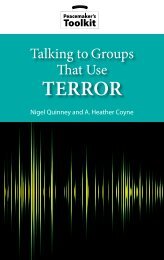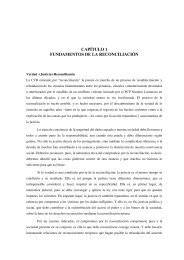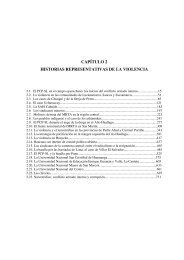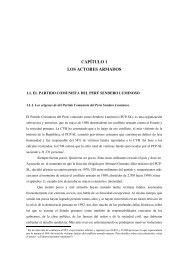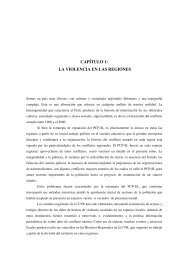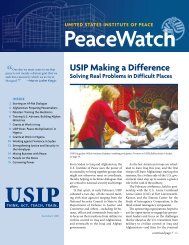Download PDF (5.43 MB) - ReliefWeb
Download PDF (5.43 MB) - ReliefWeb
Download PDF (5.43 MB) - ReliefWeb
You also want an ePaper? Increase the reach of your titles
YUMPU automatically turns print PDFs into web optimized ePapers that Google loves.
SECTION 2 | Lesson 2.4C | responding to conflict: negotiation—identifying wants and needsWants: In a negotiation, a want is a statement of demand and is oftennot flexible. The party making the demand insists on getting what theywant: “I want land” or “I want $500!”Needs: In a negotiation, a need is what lies beneath the demand andcan often be determined by asking why a party is making such ademand: “I need to feed my family” or “I need to feel respected.”IV. Guided Practice (15 minutes)1. Select two students to act out the homework scenario and give them theHomework Conflict Role-play Handout. Prepare them by reviewing theconflict with them, making sure they understand their roles.2. After they have acted out the role-play, ask the class:◆◆ Do you think they solved their conflict effectively? Why or why not?◆◆ Did you know their needs?3. Allow the class to ask the two students anything they want that will helpthem determine the wants and needs of the siblings. Remind them thatasking why someone wants what they want can often get at their needs.4. Distribute the Wants and Needs Worksheet and have students fill in the firstthree columns on the chart based on the class discussion.V. Independent Practice (13 minutes)1. Divide the class into groups of three.2. Direct them to solve the problem (the last column on the chart-Action),reminding them that the key to finding the best course of action is tounderstand each person’s needs. Refer back to the posted definitions.Have groups share their solutions.3. Discuss some or all of the following questions:◆◆ Why do we often focus only on people’s wants?◆◆ Why is it sometimes hard to know someone’s needs?◆◆ How did looking at needs help you think of a solution?4. Have each group share their solutionsand create a master list on the board.One possible solution is to let some ofthe air out of the tires so the truck canpass through the tunnel. Do not sharethis solution until the end.5. If you have time, you can move past thebrainstorming phase to the analysisphase in which people talk about theadvantages and disadvantages ofeach idea, as a way of eliminating thosethat won’t work and narrowing thepossibilities.5. Lead a class discussion using some or allof the following questions.◆◆◆◆◆◆Was it difficult to list options withoutevaluating or analyzing them as youwent along? If so, why?Did you have more ideas as a groupthan you would have had workingindividually? Why?What is the value of creativity in thenegotiation process?Note: It is often difficult for students toavoid commenting, either positively ornegatively, on various ideas. Try to discouragestudents from doing so. Remind themthat after all ideas have been expressed,they can discuss the merits of each.Part 245 minutesI. More Independent Practice (32 minutes)1. Divide students into pairs and give them one of the three conflict scenariosfrom the Conflict Scenario Role-plays Handout to role play. Also distributethe Wants and Needs Worksheet to each student.2. Have each student read their role and identify their own wants and needs.They should write this information under Party 1 on the chart. (5 minutes)3. Then have each group role play their scenario, trying to determine theother party’s wants and needs. Remind them to ask the other party whythey want what they want. Have them write this information underParty 2. (7 minutes)4. Have them work together to see what they could do to solve their problemin a way that meets both of their needs. They should put this informationunder the Action column. (10 minutes)5. Have one pair from each conflict scenario present their information to thegroup. After each presentation, ask other groups with the same scenario toadd any additional information to the chart. (10 minutes)Peacebuilding Toolkit for Educators71



